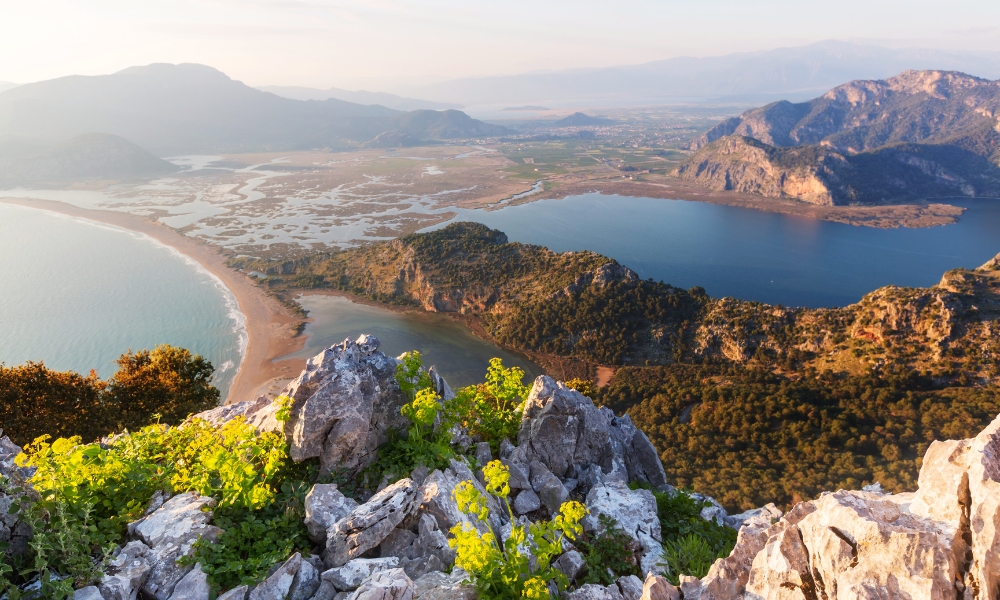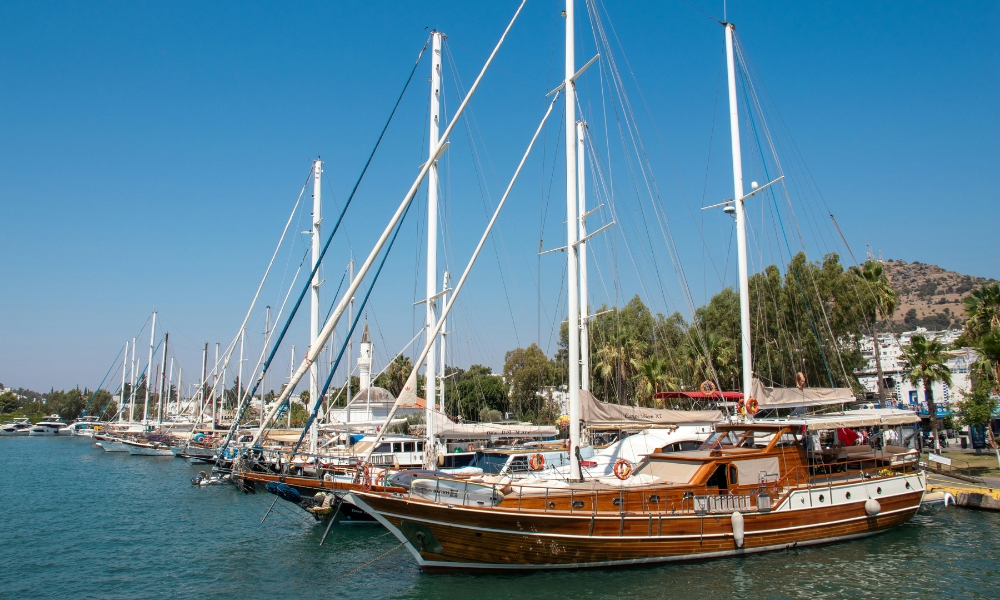Tracing Democracy’s Roots Along Turkey’s Lycian Coast

Mediterranean Hiking
When you walk on Turkey’s Lycian Way, a 540-kilometer trail along the Mediterranean coast, you are not just hiking; you are also walking in the footsteps of Lycia, one of history’s most interesting civilizations. The path goes through rough ridges, old tombs, and small villages like Simena, where you can still see signs of the Lycian League. As you walk along the trail, you’ll see sarcophagi scattered across the hills and ruins that remind you of a society that was once thought to be the first democratic union in the world.
Finding the ruins of Lycia
The ruins of Lycian culture tell a very clear story in Simena and all over the Teke Peninsula. Every step takes you back in time, from Gothic-style sarcophagi on hilltops to the fortress walls of Simena Castle. This was a time when people were free to sail and power was held by regions. As you explore nearby towns like Kaleüçağız, you’ll see necropolises with old tombs in them. These aren’t just old things left behind by people; they’re also windows into the beliefs and way of life of a society that valued both ancestor worship and community government. These landscapes are a great source of inspiration for anyone who loves to travel and take pictures or write about their travels.
A Civilization Remembered in History
Scholars have been interested in the history of Lycia for a long time. Ancient authors, such as Herodotus, asserted that the Lycians originated from Crete, whereas contemporary historians regard them as Anatolian individuals influenced by Greek and Persian cultures. Their political legacy, on the other hand, is clear. The Byzantines and Turks eventually took over the civilization, but its system of government had a lasting effect. As you stroll through the ruins of Lycian cities today, you can reflect on how these mountain fortresses pioneered a democratic system that was significantly ahead of its era.
The Lycian League
The Lycian League is what makes Lycia stand out. It is a group of 23 city-states. It is thought to be the first democratic union in the world, having been formed in the 2nd century BCE. Based on their size, each city got a certain number of votes. For example, major cities like Patara got three votes, medium-sized settlements got two, and small towns got one. This balance of proportional representation made sure that decisions were fair. The League’s governing body chose leaders, hired judges, and handled taxes. The 18th-century philosopher Montesquieu praised it as “the most perfect constitution of antiquity.” For you as a traveler, standing among the ruins of Patara offers a chance to imagine the very council that inspired later democracies.
Influence on the United States
Centuries after the Lycian League dissolved, its ideas resurfaced during the drafting of the United States Constitution. In 1787, James Madison referenced Lycia as an example of effective proportional representation while debating at the Constitutional Convention. By citing this ancient model, he reinforced the principle that balanced governance could unite diverse communities under a fair system. When you trace the footsteps of the Lycians today, you are also tracing the intellectual roots of American democracy.
Experiencing the Lycian Way Today
Travelling along the Lycian Way is more than a historical journey—it is a cultural immersion. As you pass through villages, you might share gözleme flatbreads and goat cheese with locals, sip strong tea, or watch shepherds guide their flocks. The trail itself is alive with nature: tortoises, wildflowers, and the occasional snake crossing your path. For anyone engaged in travel blogging, travel writing, or travel vlogging, the Lycian Way provides vivid material. You can capture travel photography composition that balances rugged landscapes with timeless ruins or test travel vlogging equipment and software in authentic, off-the-grid settings.

Lycian Way
Tips for Documenting Your Journey
When you embark on this journey, consider how best to capture and share it:
Travel photography tips for beginners: Use natural light at sunrise or sunset to highlight tombs and ruins.
Travel writing tips and techniques: Blend historical context with personal impressions to bring places to life.
Travel blogging tips: Create posts that link your experiences on the Lycian Way with larger themes like democracy and heritage.
Travel journaling ideas and inspiration: Record reflections on how ancient governance resonates with today’s world. These approaches not only enrich your personal memories but also help you learn how to start a travel blog or even explore how to monetize your travel blog with ads.
Conclusion
As you go around Lycia, you’re not just seeing a long-lost civilization; you’re also discovering the ideas that led to democracy in the present world. The Lycian League’s new way of running things is still remembered today, connecting a little Mediterranean union with the founding values of the United States. This experience is both cultural and intellectual for you as a traveler. You may learn about history while recording it through travel photography, writing, or even vlogging. Every step of the Lycian Way reminds you that travel isn’t only about seeing new locations; it’s also about connecting with the concepts that have shaped our world for a long time.



